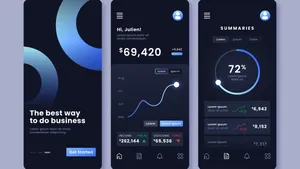Fidelity's ZERO Index Funds are famous in the investing world because they were the first products to offer investors a 0.00% expense ratio. This means you pay absolutely nothing to Fidelity to manage the fund—a true breakthrough in low-cost investing.
For beginners, these funds offer an incredibly simple, low-risk way to gain instant diversification across the entire U.S. stock market. However, they come with one unique catch that you must understand before investing.
The Attraction of the ZERO Funds
The appeal of the Fidelity ZERO funds is simple mathematics: over decades, even small fees erode compounding returns. Eliminating the expense ratio entirely maximizes your long-term growth.
Key ZERO Funds and Their Focus
Fidelity offers several ZERO funds, allowing you to build a globally diversified, passive portfolio with no management fees:
| Fund Ticker | Fund Name | Focus |
| FZROX | Fidelity ZERO Total Market Index Fund | Tracks the entire U.S. stock market (large, mid, and small caps). |
| FNILX | Fidelity ZERO Large Cap Index Fund | Tracks large-cap U.S. stocks (similar to the S&P 500). |
| FZIPX | Fidelity ZERO Extended Market Index Fund | Tracks U.S. mid- and small-cap stocks (everything outside the S&P 500). |
| FZILX | Fidelity ZERO International Index Fund | Tracks international developed and emerging markets. |
The Value Proposition
- Zero Fees: The expense ratio is genuinely 0.00%. This is better than index fund giants like Vanguard or Schwab, whose funds often charge a tiny fee (e.g., 0.03% or 0.04%).
- Simple Diversification: With FZROX, you get exposure to thousands of stocks with a single purchase, making it an ideal core holding for any retirement or taxable account.
- Zero Minimums: You can start investing with any amount of money.
The Catch (Non-Portability)
While the funds are free, they are exclusive to Fidelity, which creates a potential problem if you ever wish to transfer your assets.
The Non-Proprietary Index Problem
Unlike standard index funds that track public indices (like the S&P 500 or the Dow Jones), Fidelity's ZERO funds track proprietary indices created by Fidelity itself.
- The Lock-in: If you ever decide to switch brokers (e.g., move your IRA to Vanguard or Schwab), you cannot transfer your Fidelity ZERO funds. You must sell the ZERO funds and then transfer the resulting cash to your new broker, where you can repurchase a similar index fund.
- The Tax Headache: This forced selling is not an issue inside a tax-advantaged account (like a Roth IRA or 401(k)). However, if the ZERO funds are held in a taxable brokerage account, selling them will trigger capital gains tax on any profit you've made.
Should You Use Fidelity ZERO Funds?
The answer depends entirely on the type of account you are using.
| Account Type | Recommendation | Why |
| Roth IRA / Traditional IRA | Yes, strongly recommended. | Since capital gains are already shielded from taxes in these accounts, there is no downside to the "sell-and-transfer" rule. You maximize tax-free growth over decades. |
| 401(k) / Workplace Plan | Yes, strongly recommended. | If your workplace plan offers a ZERO fund, use it. The institutional nature of the plan already limits portability, so the tax-free advantage is maximized. |
| Taxable Brokerage Account | Be cautious. | While the 0.00% expense ratio is tempting, the potential capital gains tax burden from a forced sale if you switch brokers might erase years of fee savings. Use a standard ETF (like VTI or ITOT) for tax-loss harvesting and portability. |
Conclusion
Fidelity's ZERO Index Funds are a genuine win for the consumer, offering best-in-class pricing for diversification. For retirement and tax-advantaged accounts, they are an absolute must-have. For taxable accounts, weigh the minimal fee savings against the potential future capital gains tax triggered by the lack of portability.






